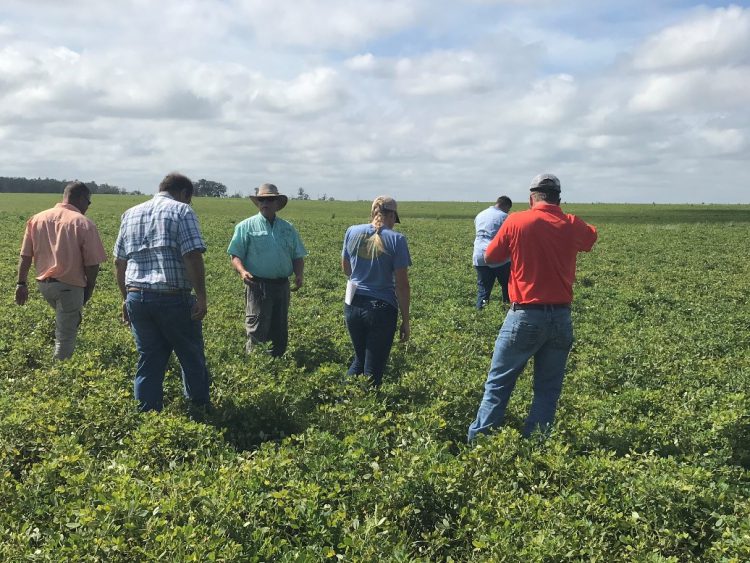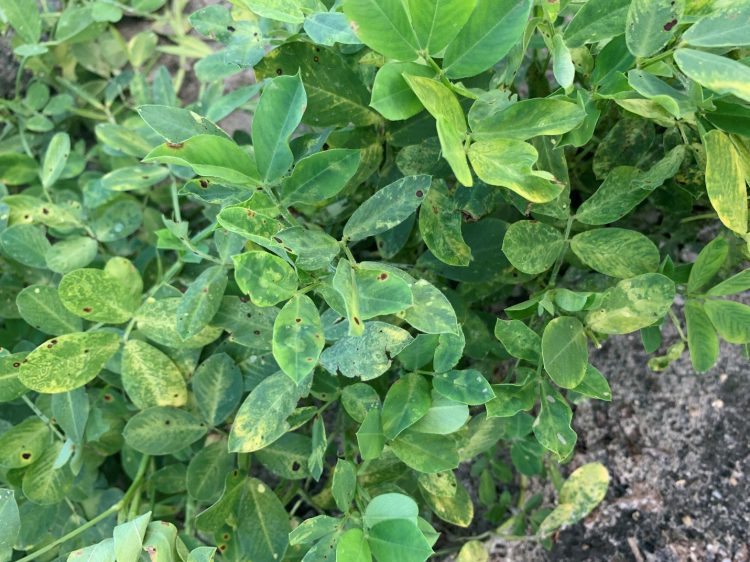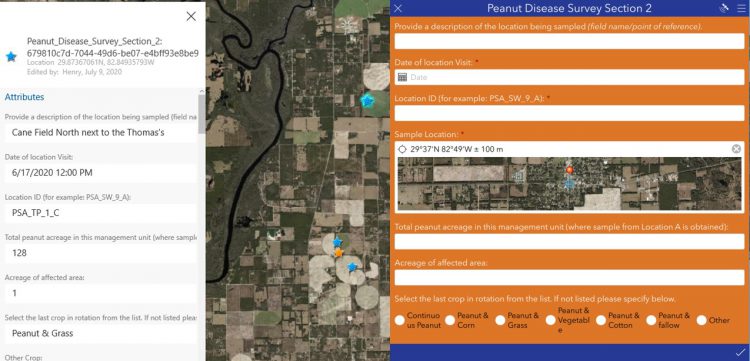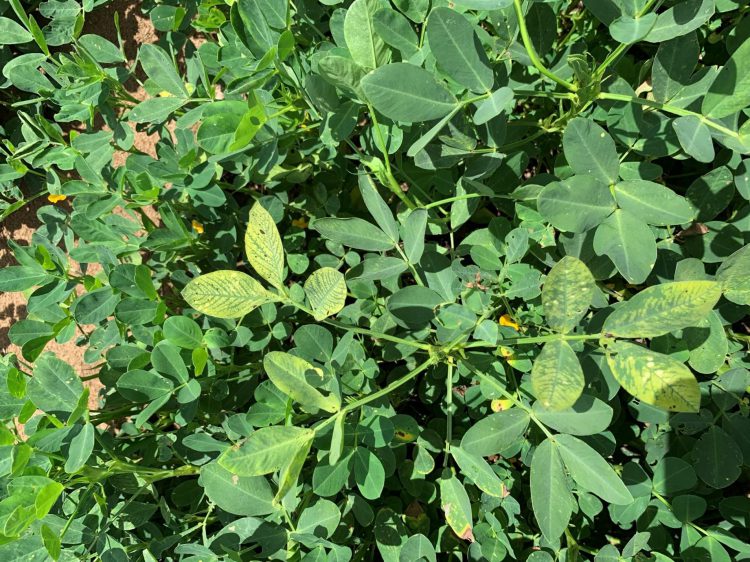Authored by: De Broughton, UF Regional Specialized Agent for Row Crops, Ian Small, UF Plant Pathologist, Ethan Carter, UF Regional IPM Agent, Marina Burani Arouca – UF Extension Program Assistant, Tyler Pittman – Gilchrist County UF Extension Agent

A group of Extension agents, research scientists and producers investigate fields with peanut decline symptoms in 2017. This investigation initiated the peanut survey effort.
–
What is the Peanut Survey?
In recent years, peanut growers in the North-central and Panhandle regions of Florida have observed an increase in plant health issues during the growing season. Some of these issues are associated with higher rates of disease, insect pests, nematodes, reduced germination, and weather induced stress. As a result, extension agents and university scientists have teamed up to reconstruct and build upon a pre-existing Peanut Survey effort that was established in 2017 during a massive peanut decline.
In 2017 the phenomenon, coined “peanut collapse”, or “peanut decline” by many growers and researchers affected an estimated 25,000 acres of peanuts in the state, and caused yield reductions of more than 1,000 pounds per acre on average in these locations (retrieved from: Peanut Season has Begun in North Florida). At that time, UF/IFAS extension agents and researchers teamed up with the University of Georgia and regional producers to investigate the cause, but no main culprit was found. As a result, the Peanut Survey was developed to help form a database of information on a regional scale. The database was intended to help correlate factors, predict these events, and ultimately lead to solutions.

The Survey can be used to monitor known diseases as well as diagnose unknown problems. Tomato Spotted Wilt Virus was detected from the sample above as well as various nutrient deficiencies and moderate nematode presence.
–
2020 Peanut Survey
Currently, the Peanut Survey has taken on a new life as it is now being used to monitor trends of diseases over time at key farm sites. In addition to this monitoring plan, if growers experience unknown disease or stress related issues during the season, the survey can be used to collect random samples at any time for analysis. Growers are encouraged to take advantage of this resource to help them identify problems in unhealthy peanuts. In previous years, the project was focused on areas of peanut decline in North-central Florida, but has been extended statewide this year.
A new key aspect of the survey is its integration into a Geographic Information System (GIS). By using the ArcGIS online platform agents and specialists from across the state can submit, edit, store, and archive georeferenced sample level data and photos conveniently in one platform. This will allow for the survey data to be integrated with climatic, soil and management data from across the region to hopefully better understand regional and local peanut disease trends.

The new ArcGIS online platform and data submission application customized for the Peanut Survey to make agent submission easier and more consistent.
–
How Will it Benefit Producers?
Participating farmers will benefit immediately from free analysis reports on samples being collected covering disease and nematode diagnostics as well as, tests on water, soil, and foliar tissue nutrients. Extension agents can use the reports to help growers troubleshoot field level issues and offer consultation advice. Long term benefits include helping scientists understand how peanut diseases are progressing in relation to our climatic conditions and management decisions. The information derived will help guide more research initiatives and strengthen the peanut industry in Florida over time.
The UF/IFAS State Peanut Team encourages growers to report the appearance of declining peanuts, please contact your local county agent or De Broughton, North Florida Research and Education Center, Suwannee Valley who is coordinating this effort in Florida.

This image reveals a common leaf symptom seen in the season of 2019. No virus or major nutrient deficiencies were found among the samples where this symptom was routinely observed.
–
The UF/IFAS PEanut Team would like to acknowledge the Florida Peanut Federation, the Florida Peanut Producers Association and National Peanut Board for supporting the Peanut Survey effort.
- Farming More Efficiently with Grid Soil Testing and Precision Nutrient Application - November 12, 2021
- Calcium for Peanut Production in North Florida - May 28, 2021
- Evaluation of Controlled Release Fertilizers for Crop Production in Florida - December 11, 2020
